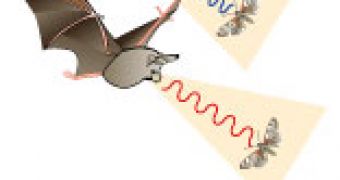Humans see with their eyes, dogs are said to "smell" things and bats literally see with their ears. The little flying mammals have a complex sonar, employing ultrasounds (sounds with a frequency over 20 kHz, which cannot be heard by the human ear). Bats employ the sonar especially when hunting and flying through caves: they send out the sonic pulses and listen to the reflected echoes, which offer them details of the surroundings.
Now a Scottish team at the University of Strathclyde wants to imitate the bat sonar to detect and locate inner body tumors, using the ultrasound echo for assessing differences in the inner body structure. The report published in The Engineer magazine says that the new technology would be based on how bats, just like dolphins and toothed whales, tune their ultrasound pulses to focus on individual targets.
The "acoustic codes" are able to furnish information for determining various kinds of objects. A bat can emit a specific ultrasound pulse on hunting and searching for moths, whose echo delivers the best data if the detected object is a flying insect or just a falling leaf.
"Bats, dolphins and whales use complex acoustic waveforms for object identification and navigation." said lead researcher Professor Gordon Hayward.
In fact, recent researches show that both bats and dolphins use during their migration Earth's electromagnetic field rather than the ultrasound sonar.
Hayward's team of engineers is collaborating with mathematicians for achieving acoustic codes meant for a large variety of targets, the main aim being cancer cells. The new technology could be completed in 3 years and could also be employed by the army to detect underwater mines.
"With improved image capability, you could envisage a mine hunter locating a mine, then classifying it and sending a small robotic vehicle to dispose of it," said Hayward.
The British are collaborating with teams from Virginia and Southern California that have already achieved ultrasound pictures of cells.

 14 DAY TRIAL //
14 DAY TRIAL //